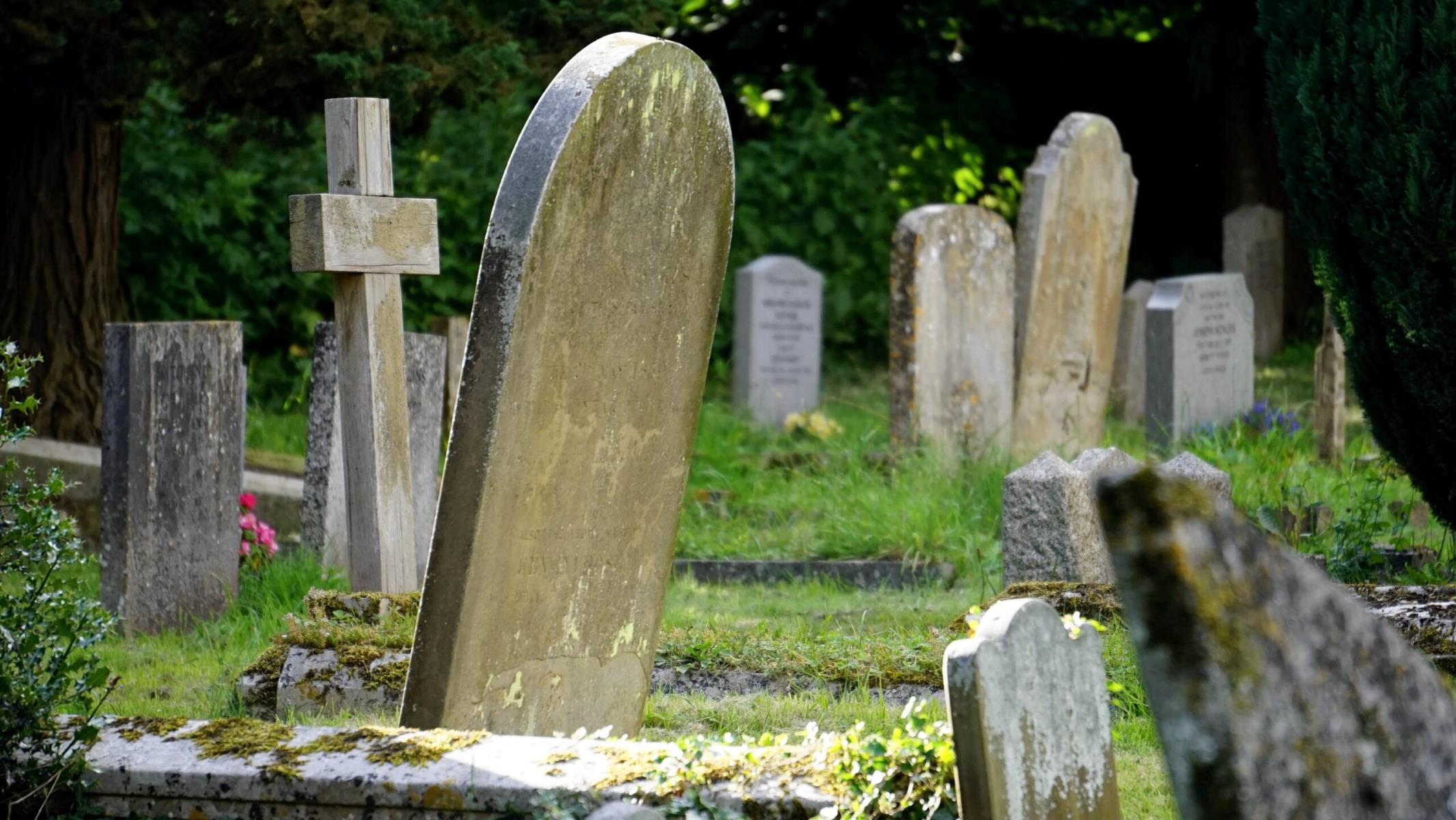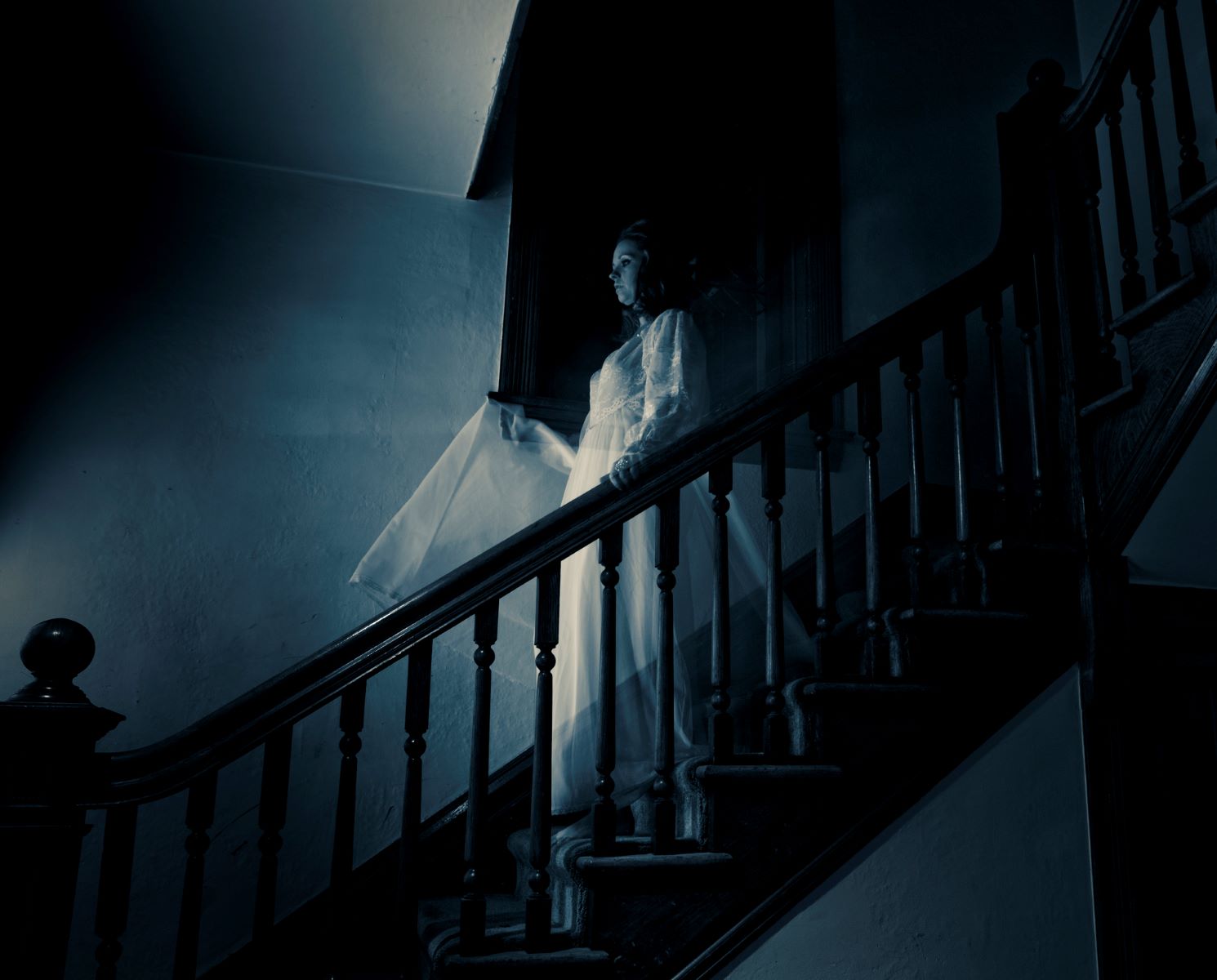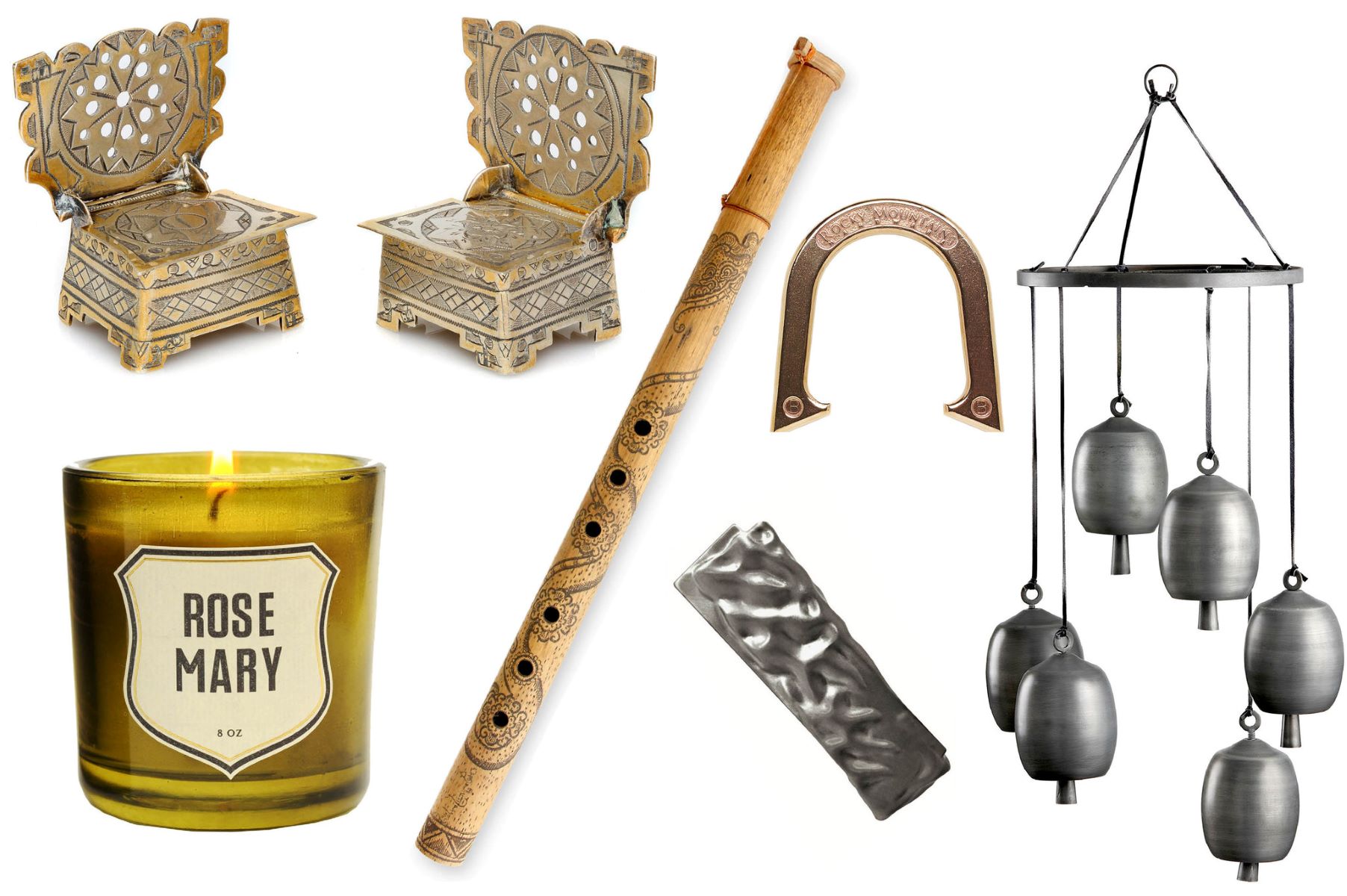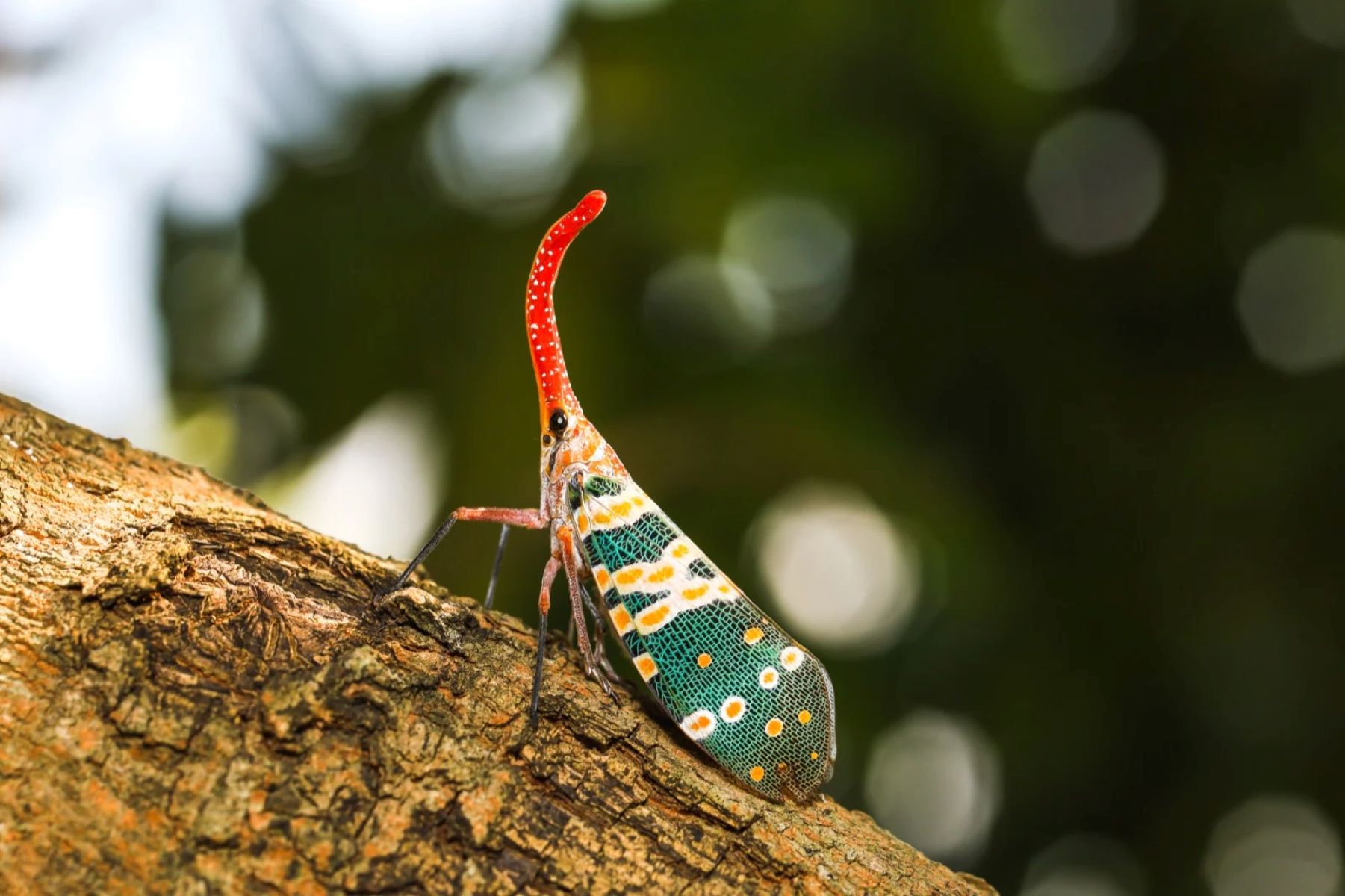Home>Arts and Culture>10 Haunting Symbols Of Death From Around The World


Arts and Culture
10 Haunting Symbols Of Death From Around The World
Published: February 10, 2024
Explore the eerie and fascinating symbols of death from diverse cultures worldwide. Discover the intriguing connections between arts and culture in these haunting depictions.
(Many of the links in this article redirect to a specific reviewed product. Your purchase of these products through affiliate links helps to generate commission for Regretless.com, at no extra cost. Learn more)
Table of Contents
The Grim Reaper
The Grim Reaper, a haunting and enigmatic symbol of death, has long captured the human imagination. Depicted as a cloaked figure wielding a scythe, this iconic representation of death transcends cultural boundaries and resonates deeply with people around the world. Here's a closer look at the symbolism and cultural significance of the Grim Reaper.
-
The Grim Reaper is often associated with the concept of mortality and the inevitability of death. Its ominous presence serves as a powerful reminder of the fleeting nature of life and the universal experience of mortality.
-
In many cultures, the Grim Reaper is viewed as a psychopomp, a guide who escorts the souls of the deceased to the afterlife. This portrayal underscores the notion of death as a transitional phase rather than a definitive end.
-
The image of the Grim Reaper has permeated various forms of artistic expression, from literature and folklore to visual arts and popular culture. Its haunting visage has been immortalized in countless works, adding to its enduring mystique.
-
The Grim Reaper often appears in depictions of the medieval Danse Macabre, a symbolic representation of the universality of death. This motif, prevalent in European art and literature, underscores the notion that death is the great equalizer, transcending social status and wealth.
-
In Mexican culture, the Grim Reaper finds representation in the iconic figure of La Calavera Catrina, a skeletal female figure adorned with elegant attire. This whimsical yet macabre portrayal of death is a central figure in the Day of the Dead celebrations, where death is embraced as an integral part of life.
-
The Grim Reaper's presence in popular media, such as films, television, and literature, has cemented its status as a cultural archetype. Its portrayal as a formidable and relentless force embodies the primal fear of mortality, captivating audiences across the globe.
The Grim Reaper stands as a timeless symbol that transcends cultural and geographical boundaries, serving as a poignant reminder of the impermanence of life. Its enigmatic presence continues to intrigue and unsettle, inviting contemplation of the profound mysteries surrounding mortality and the afterlife.
Skull and Crossbones
The skull and crossbones, a potent and chilling emblem, has long been associated with death, danger, and the macabre. This stark symbol, featuring a human skull atop two crossed bones, has left an indelible mark on various facets of human culture and history. Its presence evokes a visceral response, conjuring images of peril and mortality. Let's delve into the multifaceted symbolism and cultural significance of the skull and crossbones.
-
The skull and crossbones, commonly known as the Jolly Roger, has been historically linked to piracy, serving as a foreboding warning to potential victims. This iconic symbol adorned pirate flags, striking fear into the hearts of those who encountered it on the high seas. Its menacing presence signified the ruthless and perilous nature of pirate activity, leaving an enduring legacy in maritime lore.
-
In the realm of alchemy and secret societies, the skull and crossbones symbolize mortality and the transient nature of human existence. It serves as a potent reminder of the inevitability of death, prompting contemplation of the impermanence of life and the ephemeral nature of earthly pursuits.
-
The skull and crossbones have also found resonance in the realm of popular culture, often associated with poison labels and hazardous materials. Its inclusion on warning signs and toxic substance packaging underscores its association with peril and the potential for lethal consequences.
-
Within the context of Day of the Dead celebrations in Mexico, the skull, or calavera, holds profound significance. Adorned with vibrant colors and intricate designs, these decorative skulls serve as a poignant tribute to departed loved ones, embodying a celebration of life intertwined with the contemplation of mortality.
-
The skull and crossbones have permeated various art forms, from literature and visual arts to fashion and music. Its enigmatic allure continues to captivate and inspire, serving as a potent motif that transcends cultural boundaries and resonates with diverse audiences.
The skull and crossbones stand as a haunting symbol that transcends time and place, evoking contemplation of mortality, peril, and the enigmatic nature of existence. Its enduring presence across diverse cultural landscapes underscores its status as a potent emblem that continues to intrigue and unsettle, inviting reflection on the profound mysteries surrounding mortality and the afterlife.
Coffin
The coffin, a somber and evocative symbol of death, holds profound significance across diverse cultures and historical contexts. As a vessel for the deceased, it embodies the solemn ritual of laying the departed to rest while serving as a poignant reminder of mortality's inexorable grip on human existence.
-
The coffin, often crafted with meticulous care and adorned with symbols of religious or cultural significance, stands as a tangible representation of the transition from earthly life to the mysteries of the afterlife. Its form, whether simple or ornate, reflects the cultural and religious traditions surrounding death and burial practices.
-
In many cultures, the act of preparing and adorning the coffin is imbued with deep symbolism and ritualistic significance. From the selection of materials and the inclusion of meaningful adornments to the solemn process of placing the deceased within its confines, every aspect of coffin preparation serves as a poignant expression of respect and reverence for the departed.
-
The symbolism of the coffin extends beyond the immediate mourning period, resonating with broader themes of mortality, the afterlife, and the human experience. Its presence at funeral rites and interment ceremonies underscores the universal acknowledgement of death as an inevitable and inescapable aspect of human existence, prompting contemplation of life's transient nature and the enduring legacy of those who have passed.
-
The coffin's role in funerary practices also reflects cultural attitudes towards death and the afterlife. Whether viewed as a vessel for the soul's journey to the next realm, a temporary resting place until the resurrection, or a poignant reminder of the impermanence of earthly life, the coffin embodies profound philosophical and spiritual connotations that transcend individual belief systems.
-
The imagery of the coffin has permeated various forms of artistic expression, from literature and visual arts to film and theater. Its haunting presence in works of fiction and artistic representations serves as a potent reminder of the human fascination with mortality and the enigmatic mysteries surrounding death and the afterlife.
The coffin, with its profound symbolism and cultural resonance, stands as a poignant emblem of the human experience, prompting contemplation of mortality, the afterlife, and the enduring legacy of those who have passed. Its enduring presence across diverse cultural landscapes underscores its status as a potent symbol that continues to intrigue and unsettle, inviting reflection on the profound mysteries surrounding mortality and the afterlife.
Black Cat
The black cat, with its mysterious and enigmatic presence, has long been intertwined with superstitions, folklore, and symbolism surrounding death. Across various cultures, this sleek and elusive feline has been both revered and feared, embodying a potent amalgamation of superstitions and symbolic associations.
In Western folklore, the black cat has been historically linked to notions of bad luck and malevolence, particularly when it crosses one's path. This superstition, rooted in centuries-old beliefs, has perpetuated the perception of black cats as harbingers of misfortune and impending doom. Their association with witchcraft during the Salem witch trials further solidified their ominous reputation, casting them as familiars to witches and agents of dark forces.
Conversely, in certain cultures such as ancient Egypt, the black cat was venerated and held in high esteem. Revered for their grace, agility, and perceived mystical qualities, these ebony-hued felines were associated with protection and good fortune. The Egyptian goddess Bastet, often depicted with the head of a lioness and the body of a woman, was closely linked to the symbolism of the black cat, representing fertility, domesticity, and the safeguarding of the home.
In the context of death symbolism, the black cat's association with superstitions and folklore has imbued it with a haunting allure. Its presence in tales of the supernatural and gothic literature has perpetuated its enigmatic mystique, positioning it as a symbol that straddles the realms of the mundane and the supernatural. From Edgar Allan Poe's enigmatic feline companion in "The Black Cat" to its portrayal in folklore as a spectral apparition, the black cat continues to captivate and unsettle the human imagination.
Moreover, the black cat's association with death extends to its depiction in popular culture, where it often serves as a visual motif in the realms of horror and the macabre. Its sleek form and piercing gaze evoke an aura of mystery and foreboding, making it a potent symbol in visual arts, literature, and cinematic representations of death and the supernatural.
The enduring symbolism of the black cat, with its duality of superstition and reverence, serves as a compelling testament to the multifaceted nature of human perceptions of death and the enigmatic mysteries that surround it. Its presence in diverse cultural narratives underscores its status as a symbol that continues to intrigue and unsettle, inviting contemplation of the profound and timeless associations between mortality and the enigmatic realm of the supernatural.
Vulture
The vulture, a formidable and enigmatic creature, has long been intertwined with symbolism and associations related to death across diverse cultural landscapes. With its imposing stature and distinctive scavenging behavior, the vulture occupies a unique place in the collective human consciousness, embodying a potent amalgamation of myth, folklore, and symbolic significance.
In many ancient civilizations, the vulture was revered as a symbol of death and rebirth. Its ability to soar high above the earth, effortlessly riding the thermals, earned it a place in the celestial realms, where it was often associated with deities and the afterlife. In Egyptian mythology, the vulture was closely linked to the goddess Nekhbet, who was depicted with the head of a vulture, symbolizing protection and maternal care. This association with nurturing and safeguarding the transition from life to death underscored the vulture's role as a revered and benevolent figure in the cosmic order.
Moreover, the vulture's scavenging behavior, while evoking visceral reactions, holds profound symbolism in the context of death. Across various cultures, the vulture's role as a purifier and custodian of the natural order has been acknowledged. Its ability to consume decaying flesh without succumbing to illness or contamination positioned it as a vital agent in the cycle of life and death. In Hindu mythology, the vulture was revered as a sacred creature, embodying the divine embodiment of the goddess Shakti and serving as a guardian of the natural world.
The vulture's presence in funerary symbolism further underscores its enduring significance in cultural narratives surrounding death. In Tibetan sky burials, where the deceased are offered to vultures as a final rite, the vulture assumes the role of a celestial guide, facilitating the soul's journey to the afterlife. This ritualistic association with death and transcendence underscores the vulture's status as a potent emblem of the human experience and the enigmatic mysteries surrounding mortality.
In the realm of visual arts and literature, the vulture's haunting presence has been immortalized in various forms of artistic expression. Its depiction in ancient hieroglyphs, religious iconography, and contemporary works of fiction underscores its enduring allure as a symbol that transcends time and place. The vulture's enigmatic visage continues to captivate and unsettle, inviting contemplation of the profound and timeless associations between mortality and the enigmatic realm of the supernatural.
The vulture, with its multifaceted symbolism and cultural resonance, stands as a poignant emblem of the human experience, prompting contemplation of mortality, the afterlife, and the enduring legacy of those who have passed. Its enduring presence across diverse cultural landscapes underscores its status as a potent symbol that continues to intrigue and unsettle, inviting reflection on the profound mysteries surrounding mortality and the afterlife.
Hourglass
The hourglass, with its timeless symbolism and captivating visual appeal, stands as a potent emblem of the inexorable passage of time and the transient nature of human existence. Comprising two glass bulbs connected by a narrow neck, the hourglass embodies the cyclical rhythm of life, encapsulating profound philosophical and existential connotations that have resonated across diverse cultures and historical epochs.
The hourglass, often depicted in various forms of artistic expression, serves as a poignant reminder of the universal experience of temporality and the relentless march of time. Its visual representation of sand trickling from the upper chamber to the lower chamber encapsulates the ebb and flow of existence, prompting contemplation of mortality, impermanence, and the enduring legacy of those who have passed.
In the context of death symbolism, the hourglass assumes a profound significance, symbolizing the finite nature of life and the inevitability of mortality. Its inclusion in funerary art and memento mori serves as a poignant reminder of the transient nature of earthly pursuits and the timeless specter of death. The hourglass, often adorned with intricate designs and symbolic motifs, embodies a visual narrative of mortality and the eternal passage of time, transcending linguistic and cultural boundaries.
Moreover, the hourglass holds a revered place in the realm of allegorical representations, where it serves as a potent metaphor for the brevity of human existence and the imperative to embrace the present moment. Its presence in literary works and visual arts underscores its enduring resonance as a symbol that invites introspection and contemplation of life's fleeting nature.
Across diverse cultural landscapes, the hourglass has found resonance in rituals, traditions, and philosophical discourse, serving as a tangible manifestation of the human quest to comprehend the enigmatic mysteries surrounding mortality and the afterlife. Its enduring allure as a symbol of temporal transience and existential contemplation underscores its status as a timeless emblem that continues to intrigue and unsettle, inviting reflection on the profound and timeless associations between mortality and the enigmatic realm of the supernatural.
The hourglass, with its multifaceted symbolism and cultural resonance, stands as a poignant emblem of the human experience, prompting contemplation of mortality, the afterlife, and the enduring legacy of those who have passed. Its enduring presence across diverse cultural landscapes underscores its status as a potent symbol that continues to intrigue and unsettle, inviting reflection on the profound mysteries surrounding mortality and the afterlife.
Scythe
The scythe, an iconic and haunting symbol of death, possesses a rich tapestry of cultural and historical significance that transcends time and place. With its distinctive curved blade and evocative imagery, the scythe embodies the omnipresent specter of mortality and the inexorable passage from life to death.
In many cultural narratives, the scythe is synonymous with the figure of the Grim Reaper, a personification of death that has captured the human imagination for centuries. The Grim Reaper's portrayal wielding a scythe underscores its role as a harbinger of mortality, evoking contemplation of life's transient nature and the enigmatic mysteries surrounding the afterlife.
The symbolism of the scythe extends beyond its association with the Grim Reaper, permeating various aspects of human culture and artistic expression. In agricultural societies, the scythe serves as a tool for harvesting crops, embodying the cyclical rhythm of life and the seasonal transitions that mirror the broader themes of temporal transience and the inevitability of death. Its dual significance as an implement of sustenance and a symbol of mortality underscores the profound interplay between life and death in the human experience.
Moreover, the scythe's presence in folklore and mythology underscores its enduring allure as a potent emblem of mortality and the enigmatic realm of the supernatural. Its inclusion in tales of the reaping of souls and the transition to the afterlife underscores its status as a timeless symbol that transcends cultural boundaries, captivating and unsettling the human imagination.
The scythe's haunting presence in visual arts, literature, and popular culture further solidifies its status as a symbol that continues to intrigue and evoke contemplation of the profound and timeless associations between mortality and the enigmatic realm of the supernatural. Its depiction in works of fiction, artistic representations, and cinematic portrayals underscores its enduring resonance as a visual motif that invites introspection and reflection on the universal experience of mortality.
In essence, the scythe stands as a poignant emblem of the human experience, prompting contemplation of mortality, the afterlife, and the enduring legacy of those who have passed. Its enduring presence across diverse cultural landscapes underscores its status as a potent symbol that continues to intrigue and unsettle, inviting reflection on the profound mysteries surrounding mortality and the afterlife.
Raven
The raven, an enigmatic and revered creature, occupies a singular place in the pantheon of death symbolism across diverse cultural narratives. With its sleek ebony plumage and piercing gaze, the raven embodies a potent amalgamation of mystique, intelligence, and symbolic significance related to mortality and the afterlife.
In numerous mythologies and folklore traditions, the raven is revered as a harbinger of death and a guide to the realm of the departed. Its presence in tales of the supernatural and the liminal spaces between life and death underscores its status as a potent symbol that transcends time and place. In Norse mythology, ravens were associated with Odin, the god of wisdom and death, serving as his messengers and custodians of the slain in battle. This association positioned the raven as a revered and formidable figure, embodying the transcendence of mortality and the enigmatic mysteries of the afterlife.
Moreover, the raven's haunting presence in funerary symbolism and ritualistic practices underscores its enduring significance in cultural narratives surrounding death. In various indigenous traditions, the raven assumes the role of a psychopomp, guiding the souls of the deceased to the next realm. Its enigmatic visage and keen intelligence evoke an aura of otherworldly wisdom, positioning it as a revered figure that straddles the boundaries between the mundane and the supernatural.
The raven's inclusion in literary works and visual arts further solidifies its status as a symbol that continues to intrigue and unsettle the human imagination. Its depiction in gothic literature, poetry, and artistic representations underscores its enduring allure as a visual motif that invites contemplation of the profound and timeless associations between mortality and the enigmatic realm of the supernatural. From Edgar Allan Poe's enigmatic raven in "The Raven" to its portrayal in ancient folklore as a spectral harbinger, the raven continues to captivate and unsettle, serving as a potent emblem of the human experience and the enduring legacy of those who have passed.
In essence, the raven stands as a poignant emblem of the human experience, prompting contemplation of mortality, the afterlife, and the enduring legacy of those who have passed. Its enduring presence across diverse cultural landscapes underscores its status as a potent symbol that continues to intrigue and unsettle, inviting reflection on the profound mysteries surrounding mortality and the enigmatic realm of the supernatural.
Candles
Candles, with their flickering flames and ethereal glow, have held profound symbolism across diverse cultural and religious traditions, serving as potent emblems of remembrance, spirituality, and the enigmatic mysteries surrounding mortality. Their enduring presence in rituals, ceremonies, and commemorative practices underscores their multifaceted significance in the human experience.
In the realm of death symbolism, candles assume a central role in funerary rites and memorial services, embodying the timeless interplay between light and darkness, life and death. The act of lighting a candle in memory of the departed serves as a poignant tribute, evoking a sense of reverence and contemplation of the enduring legacy of those who have passed. The flickering flame of the candle symbolizes the transient nature of life, casting a luminous glow that transcends the veil between the earthly realm and the enigmatic mysteries of the afterlife.
Candles also hold profound spiritual connotations, serving as conduits for meditative practices and sacred rituals across diverse religious traditions. In many cultures, the act of lighting candles is imbued with symbolic significance, representing the illumination of the soul and the quest for spiritual transcendence. The gentle radiance of the candle flame evokes a sense of serenity and introspection, inviting contemplation of life's impermanence and the enduring presence of the divine amidst the mortal realm.
Moreover, the imagery of candles permeates various forms of artistic expression, from literature and visual arts to religious iconography and ceremonial practices. Their haunting allure as symbols of illumination and spiritual awakening underscores their enduring resonance as emblems that invite introspection and reflection on the profound and timeless associations between mortality and the enigmatic realm of the supernatural.
In essence, candles stand as poignant emblems of the human experience, prompting contemplation of mortality, the afterlife, and the enduring legacy of those who have passed. Their enduring presence across diverse cultural landscapes underscores their status as potent symbols that continue to intrigue and unsettle, inviting reflection on the profound mysteries surrounding mortality and the enigmatic realm of the supernatural.
Ghostly Apparitions
Ghostly apparitions, with their spectral presence and enigmatic manifestations, have long captured the human imagination and permeated cultural narratives surrounding death and the afterlife. Across diverse traditions and folklore, tales of ethereal specters and restless spirits have evoked a potent blend of fascination, fear, and contemplation of the enigmatic mysteries that shroud the realm of the supernatural.
In countless accounts and legends, ghostly apparitions are depicted as embodiments of unresolved emotions, lingering attachments, or unfinished narratives that defy the boundaries of mortal existence. Their haunting presence serves as a poignant reminder of the enduring ties that bind the living and the departed, prompting contemplation of the timeless specter of mortality and the enigmatic transition to the afterlife.
Moreover, the imagery of ghostly apparitions has permeated various forms of artistic expression, from literature and visual arts to cinematic portrayals and cultural folklore. Their enigmatic allure as spectral entities that straddle the boundaries between the earthly realm and the supernatural underscores their enduring resonance as symbols that invite introspection and reflection on the profound and timeless associations between mortality and the enigmatic mysteries of the afterlife.
In essence, ghostly apparitions stand as potent emblems of the human experience, prompting contemplation of mortality, the afterlife, and the enduring legacy of those who have passed. Their enduring presence across diverse cultural landscapes underscores their status as symbols that continue to intrigue and unsettle, inviting reflection on the profound mysteries surrounding mortality and the enigmatic realm of the supernatural.













